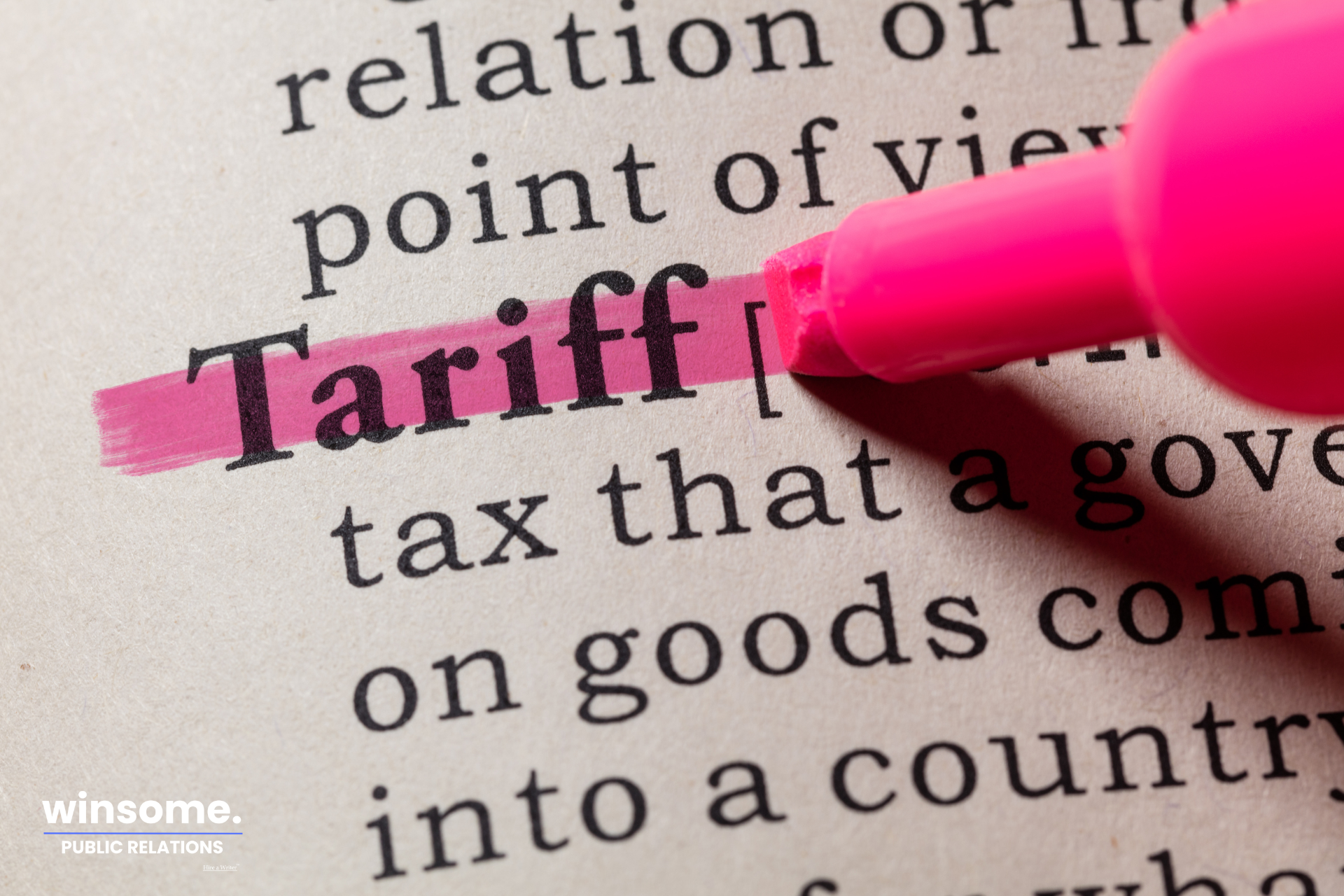How to Make Humans Connect with Technical Stories
Have you ever tried reading healthcare content? I mean, seriously, who writes this stuff? It's like they're deliberately trying to confuse you....
3 min read
 Faith Cedela
:
Mar 10, 2025 4:12:16 PM
Faith Cedela
:
Mar 10, 2025 4:12:16 PM

So you know those new tariffs on stuff from China, Canada, and Mexico that just kicked in? Yeah, the ones making everyone in PR departments collectively reach for their stress balls and emergency chocolate stashes. Well, turns out managing corporate messaging during these economic plot twists is kind of like trying to explain to your parents why you need their Netflix password even though you're a fully functioning adult—complicated, delicate, and requiring just the right tone.
Let's be real for a minute—PR teams are basically doing the corporate version of that circus act where someone spins plates while riding a unicycle. On one hand, you need to reassure investors that everything's totally fine and under control. On the other hand, you need to explain to consumers why that avocado toast they love might soon cost as much as a small car payment.
Financial communication experts suggest companies must closely examine how tariffs and rising costs might affect them, determine appropriate responses, and ensure this is reflected in guidance provided to investors and other stakeholders. It sounds straightforward enough, right? Like how I tell myself I'll just have one cookie and then somehow the entire package disappears. It's all about intention versus reality.
Major retailers have already indicated that prices could rise due to tariffs. Some executives have gone on business news channels basically doing the corporate equivalent of texting "we need to talk"—announcing that tariffs might force them to raise prices on certain products faster than I abandon my workout plans when someone mentions pizza. They've even dropped the dreaded "tariff uncertainty" bomb that would impact quarterly profits.
Here's the thing about price increases—even hinting at them is like accidentally liking someone's Instagram post from 2014. Everyone notices immediately, and it's all anyone wants to talk about. Whether it's a $35,000 car or a $10 burrito (which, let's be honest, feels like $35,000 when you're trying to budget), consumers and media are hyper-focused on any mention of paying more.
PR pros need messages more precisely crafted than my excuses for being late to morning meetings. Think strategic supply chain adjustments, optimization efforts, and maintaining quality while nurturing supplier and customer relationships — all corporate-speak for "we're trying really hard not to raise prices, but no promises."
Even casually mentioning the possibility of price adjustments as one of many available options is like wearing a "please make this the headline" t-shirt to a press conference.
Some companies have apparently been dealing with supply chain drama since before it was trending. Like that friend who was into obscure bands before they hit mainstream, they've seen it all before—from glass shortages during construction booms to pandemic-related disruptions.
Their approach? Talking directly to clients like actual humans. What a concept! Customers don't want to hear about supply chain pressures from an article; they want to hear it directly from the project teams and account managers they work with. It's like finding out important news from your friend rather than discovering it through their social media update.
Forward-thinking companies create regular market condition reports that break down what tariffs actually mean in real terms. Like explaining that a 25% tariff on Mexican imports might only increase drywall costs by 5%, not the full 25%.
These companies actually do the math for clients, skipping the vague corporate-speak and instead giving real numbers and practical implications. They'll translate economic jargon into what it actually means for your bottom line. Even a seemingly small 5% increase adds up on large projects, kind of like how all those "it's just one streaming service" subscriptions mysteriously devour my entire paycheck every month.
Companies are approaching media in two ways that remind me of my social interaction strategies: some are going all in with public statements (extrovert mode), while others prefer background briefings (introvert mode) to ensure accurate reporting.
They're using media as a megaphone to amplify messages about tariff impacts on their business, helping consumers understand why prices may rise while maintaining brand trust.
Some companies are partnering with industry associations faster than I join forces with friends at parties to avoid talking to strangers. Major automotive manufacturers are directing media inquiries to industry trade associations—basically the corporate version of "ask my friend, they know more about this than I do."
And just like how I try not to commit to weekend plans too far in advance (because who knows what emotional state future-me will be in), companies are maintaining flexibility in their messaging. It's important not to make rash decisions. Companies should build in flexibility when adjusting financial projections and consider a range of potential cost increases rather than specific figures.
PR teams and investor relations need to be as in sync as my coffee intake and productivity levels. Analysts and investors want clear answers on how tariffs affect profitability, supply chain adjustments, and financial projections—basically all the things I avoid thinking about when checking my own bank account.
According to communication experts, companies should focus on three key points that sound suspiciously like the advice my mom gave me about money management:
Companies need to be careful not to react too quickly or dramatically. They would do well to build in flexibility and account for different assumptions, so they don't have to immediately update their guidance every time there's a policy change.
In other words, the key to handling tariff-related communications is basically the same approach I take to adult life: try to look like you know what you're doing, build in room for inevitable mistakes, and always have a contingency plan for when things go sideways.
.png)
Have you ever tried reading healthcare content? I mean, seriously, who writes this stuff? It's like they're deliberately trying to confuse you....

Let's chat about the elephant in the room – writing can be a real pain in the neck sometimes. Whether you're churning out articles faster than a...

Alright, picture this: back in ’94, when Roberto Baggio missed thatcrucial penalty kick, the world was buzzing.